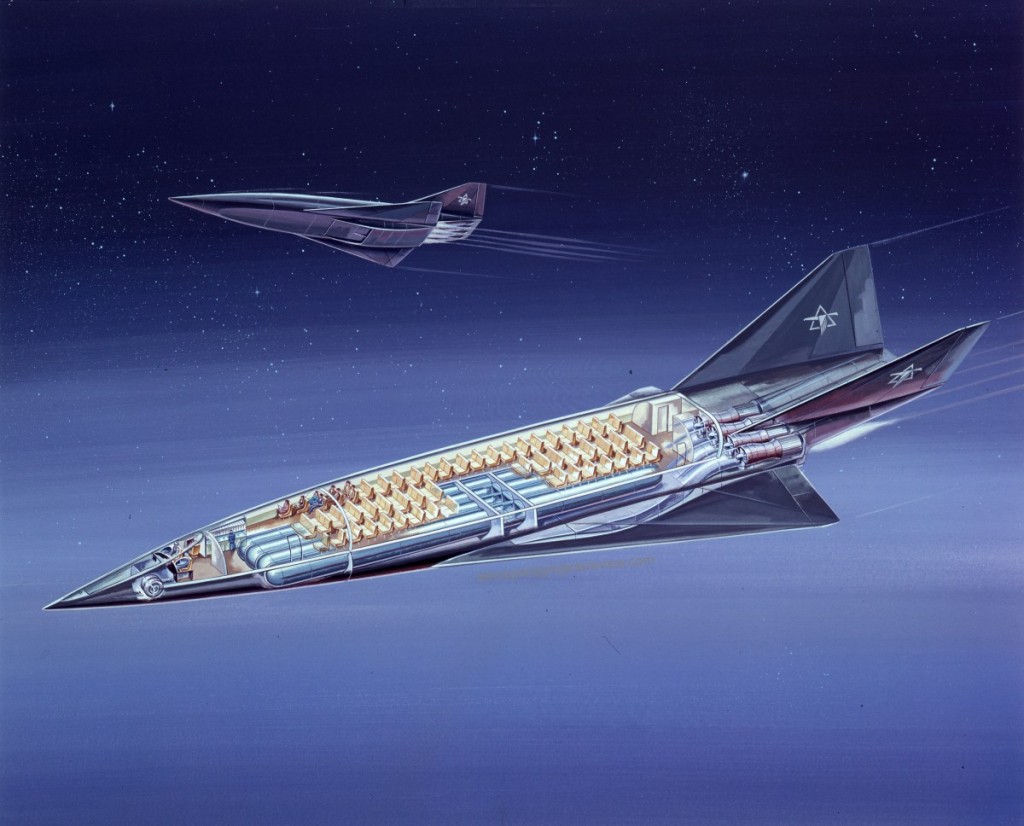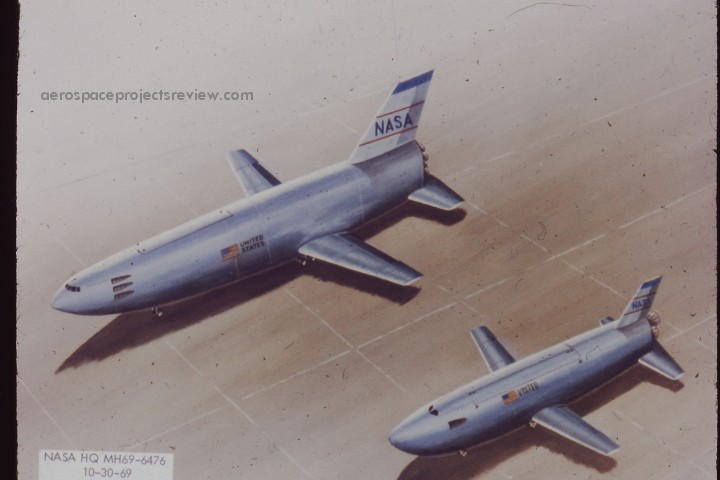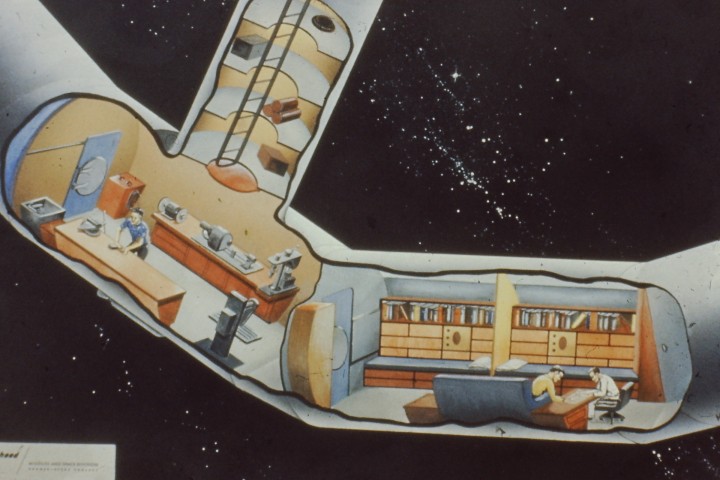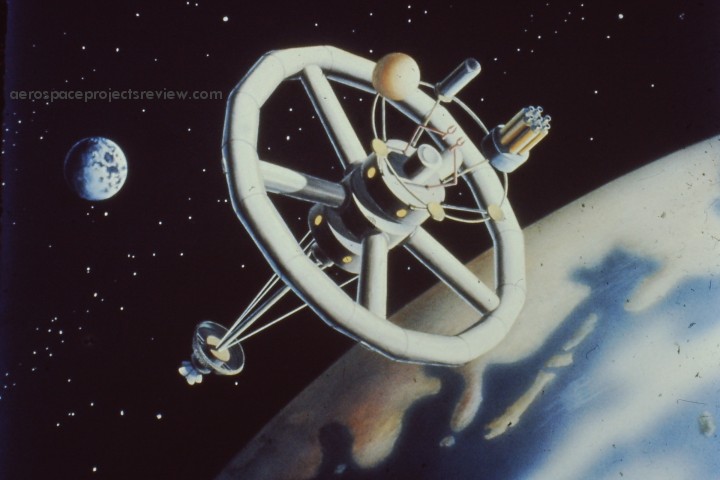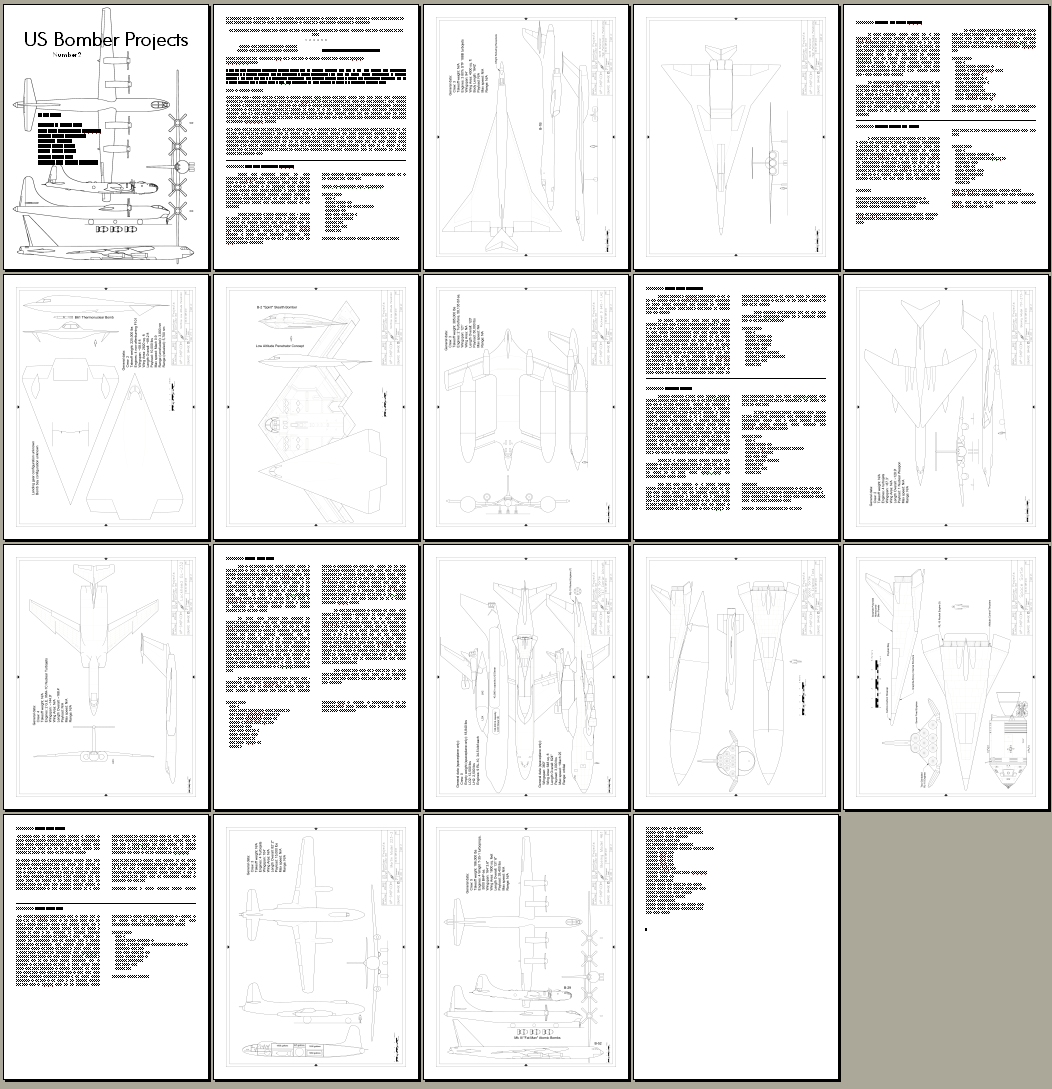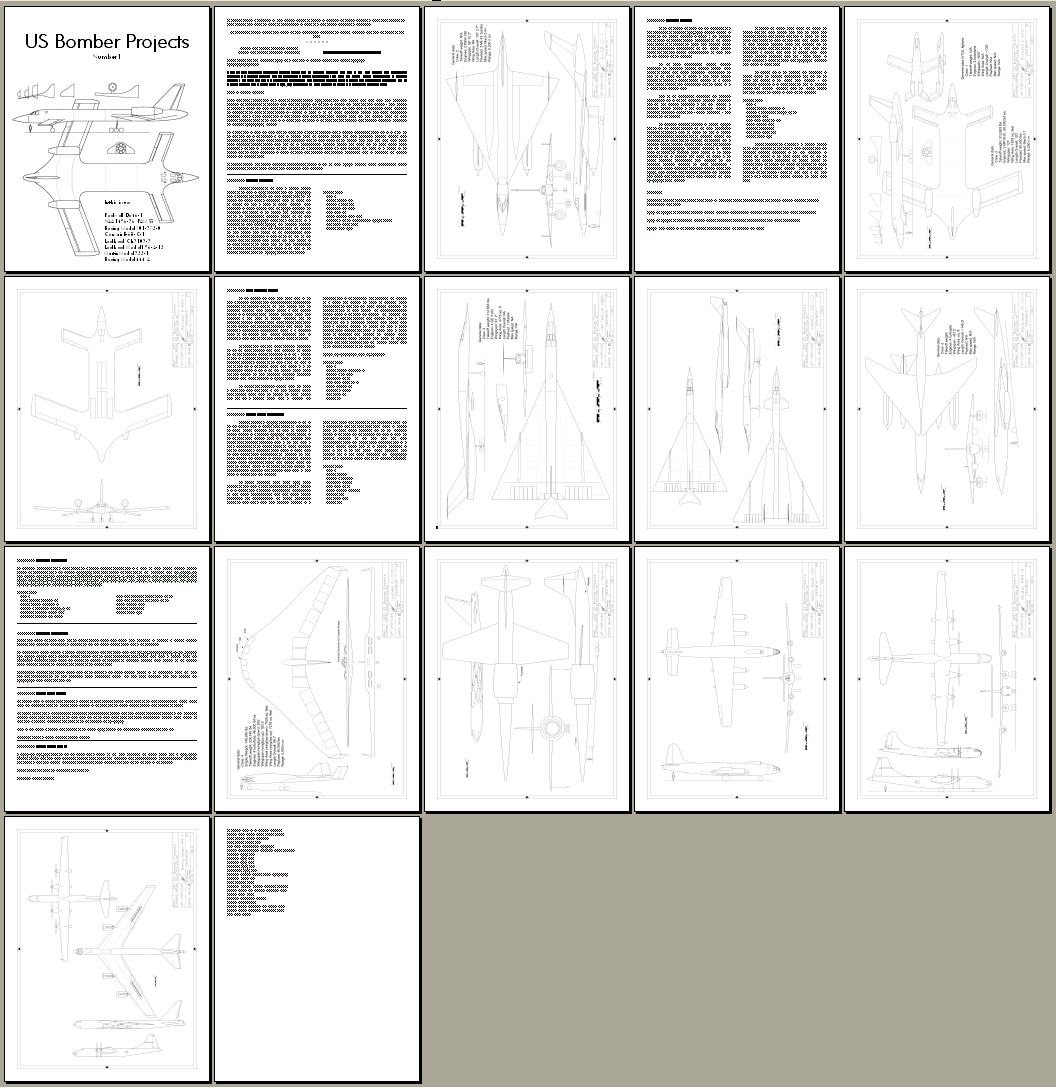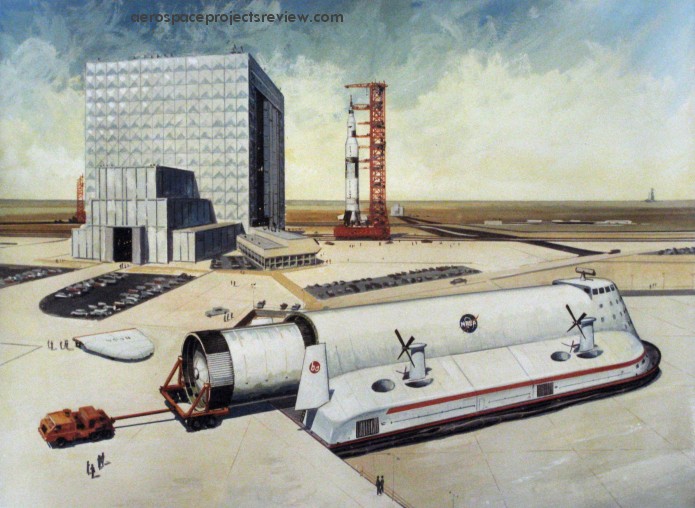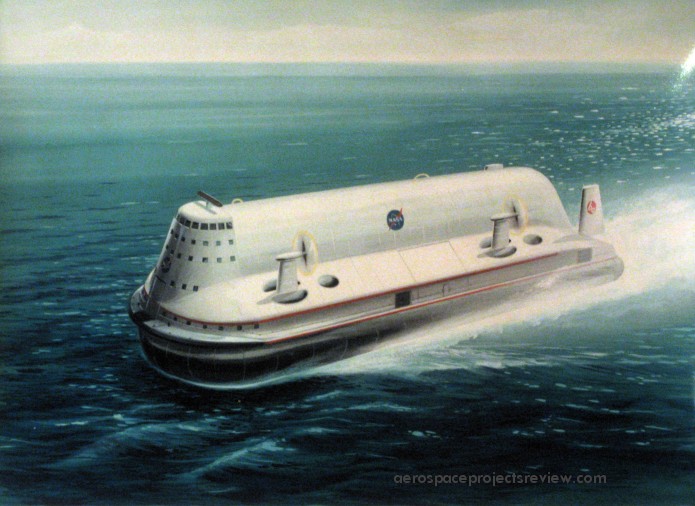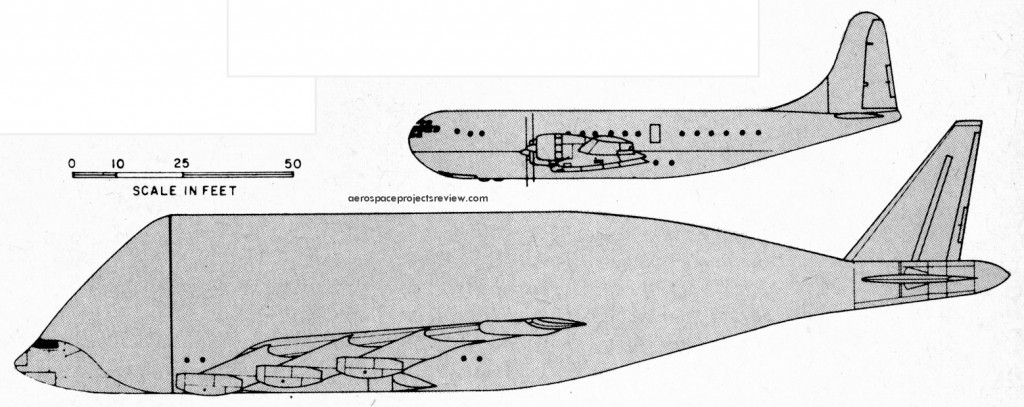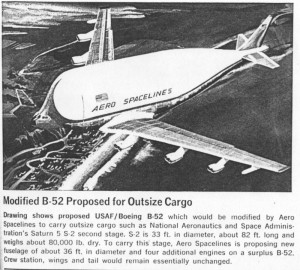A 1967 North American concept for a hypersonic (Mach 6) passenger transport. Sadly, no further data. If anyone has more – such as a diagram – I’d love to see it.
A NASA painting of a 1969-vintage Space Shuttle concept. This was known as the “DC-3” configuration, and was designed – or at least heavily pushed – by Maxime Faget, and was adopted by several McDonnell-Douglas designs. It featured two manned and reusable rocket powered stages, both burning hydrogen & oxygen, both with straight wings. The smaller orbiter would basically “belly flop” into the atmosphere when re-entering. The straight wings would not provide a whole lot of lift, but they would also not be very massive. Thus the vehicles were relatively lightweight, but with restricted crossrange. Both stages also had turbofan engines mounted in the nose for cruise and landing assist.
A closeup of part of the “wheel” of the early-60’s Lockheed space station concept. Via NASA history office.
A number of early rotating space stations used “wheels” like this, with straight cylindrical segments forming a torus. While this would be relatively easy to build, it would have the result that the flat floors would be “curved” from the standpoint of “gravity.” Things would roll “downhill” towards the joints between segments.
A sale on Aerospace Projects Review:
Volume 1: Normally $44.50 for all six issues; on sale now for $30.00
Volume 2: Normally $52.50 for all six issues; on sale now for $35.00
Volume 3 (so far… including N2&N3 Addenda): Normally $36.50 for all issues; on sale now for $24.00
——–
Sale has ended.
Issue number 2 of US Bomber Projects is now available (for background, see HERE). This issue includes:
- Rockwell D 645-1: LH2:: A variant of the low-cost missile carrier using liquid hydrogen for fuel
- NAA High Performance Penetrator: a 1963 design for a supersonic bomber, led in part to the B-1
- Boeing Model 701-273-1: Second in a series on the evolution of the XB-59
- Lockheed GL-232: A subsonic nuclear powered bomber
- Boeing Space Sortie: A small unmanned spaceplane
- Martin Model 223-2: Second in the series on the development of the XB-48 – a wartime turbojet powered medium bomber
- Boeing Model 461: Second in the series on the development of the B-52… an early postwar turboprop heavy bomber
- Northrop Low Altitude Penetrator: A competing idea for what became the B-2
USBP#02 can be downloaded as a PDF file for only $4:
——–
———
Issue number 1 of US Bomber Projects is now available (for background, see HERE). This issue includes:
- Rockwell D 645-1: a 1979 low-cost subsonic missile carrier
- NAA 1495-25 PAMSS: an early ’60’s concept for rebuilding an XB-70 into a prototype for an all-new bomber
- Boeing Model 701-273-0: First in a series on the evolution of the XB-59 supersonic bomber
- Convair B-58-C-1: a two-engined tactical bomber
- Lockheed CL-2102-2: A stealthy flying wing
- Lockheed Model 195-A-13: An early nuclear powered bomber
- Martin Model 223-1: First in a series on the evolution of the XB-48… a wartime turboprop medium bomber
- Boeing Model 444 A: First in a series on the development of the B-52… a late war turboprop heavy bomber
USBP#01 can be downloaded as a PDF file for only $4:
——–
Back in 2007 I visited the Bell Aircraft Museum in Niagara Falls, NY and got a chance to poke through their archives. Sadly, my scanner chose that day to not work, so all imagery I got came via photography with an indifferent camera. While it was more or less ok, it was not such a good system for capturing good images of glossies.
One such glossy was a 1960’s Bell concept for a hovercraft designed to transport Saturn V stages, presumably from the Michaud facility near New Orleans to Cape Canaveral.
Back when transportation of Saturn V stages was an issue, a number of vehicles were put forward. One of them was a highly modified B-52 concept from Aero Spacelines, the company that gave the world the Mini Guppy, the Pregnant Guppy and the Super Guppy. Here, a B-52 would be chopped to bits, with an entirely new fuselage built with the B-52 cockpit and tail units tacked on, with the B-52 wings added to a new wing center section, with two additional B-52 engine pods. Needless to say, this was not built. Dates from mid 1967.
